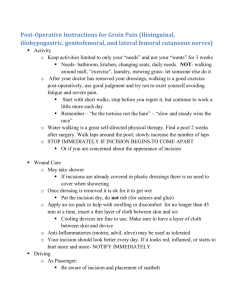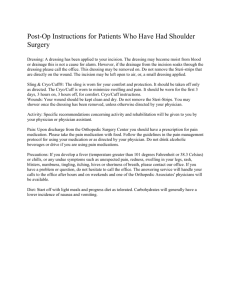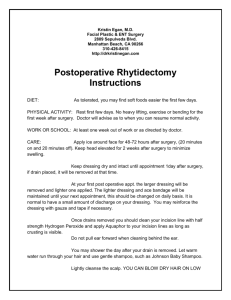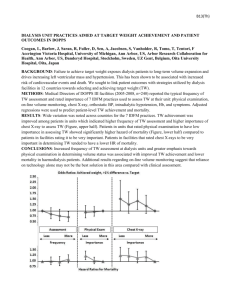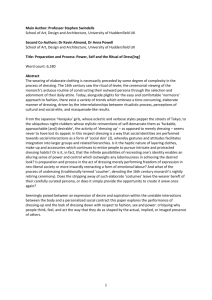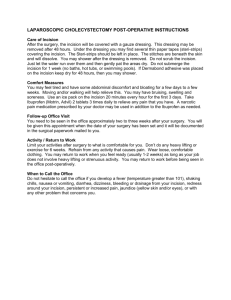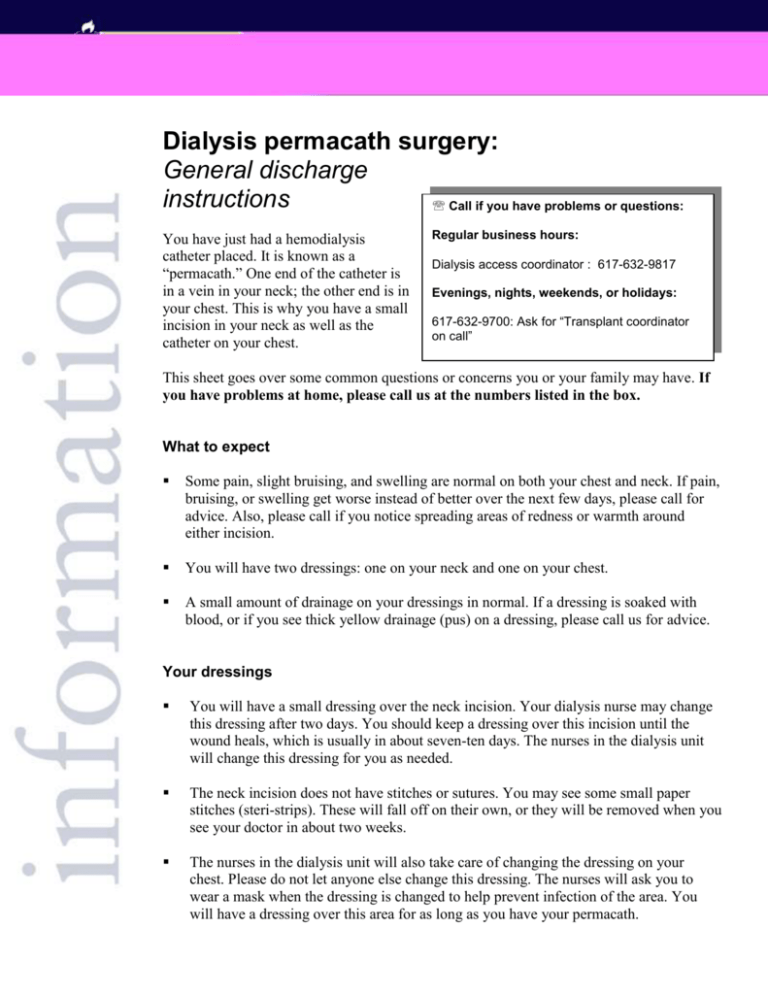
Dialysis permacath surgery:
General discharge
instructions
Call if you have problems or questions:
You have just had a hemodialysis
catheter placed. It is known as a
“permacath.” One end of the catheter is
in a vein in your neck; the other end is in
your chest. This is why you have a small
incision in your neck as well as the
catheter on your chest.
Regular business hours:
Dialysis access coordinator : 617-632-9817
Evenings, nights, weekends, or holidays:
617-632-9700: Ask for “Transplant coordinator
on call”
This sheet goes over some common questions or concerns you or your family may have. If
you have problems at home, please call us at the numbers listed in the box.
What to expect
Some pain, slight bruising, and swelling are normal on both your chest and neck. If pain,
bruising, or swelling get worse instead of better over the next few days, please call for
advice. Also, please call if you notice spreading areas of redness or warmth around
either incision.
You will have two dressings: one on your neck and one on your chest.
A small amount of drainage on your dressings in normal. If a dressing is soaked with
blood, or if you see thick yellow drainage (pus) on a dressing, please call us for advice.
Your dressings
You will have a small dressing over the neck incision. Your dialysis nurse may change
this dressing after two days. You should keep a dressing over this incision until the
wound heals, which is usually in about seven-ten days. The nurses in the dialysis unit
will change this dressing for you as needed.
The neck incision does not have stitches or sutures. You may see some small paper
stitches (steri-strips). These will fall off on their own, or they will be removed when you
see your doctor in about two weeks.
The nurses in the dialysis unit will also take care of changing the dressing on your
chest. Please do not let anyone else change this dressing. The nurses will ask you to
wear a mask when the dressing is changed to help prevent infection of the area. You
will have a dressing over this area for as long as you have your permacath.
There is a stitch at the catheter site in your chest. The dialysis nurse or your surgeon
will remove this stitch in about three weeks.
Although it may be difficult to get used to, it is important that you never get the
dressing on your chest wet. You should not shower or swim with a permacath in place.
It is ok to take a tub bath as long as you do not get the dressing wet. This is important
because bacteria grow easily in a wet or moist environment. If bacteria begin to grow
around your permacath, they could cause a serious infection at the site or in your
bloodstream.
Try not to push or pull on the catheter, especially in the first three weeks. Don’t do
anything that causes stretching or strain in the area.
Medications
You will be discharged with a prescription for pain medication. Please take as directed.
The medicine should ease the discomfort at the site, although you will continue to feel
some discomfort over the next few days. If pain at the site is severe, or if it does not get
better with medicine, please call for advice.
The pain medicine may cause constipation. Talk with your own doctor about whether
you need to take a stool softener or mild laxative.
We recommend that you do not take prescription pain medication for longer than three
days. If you feel you need medicine for longer than three days, please call for advice.
If you were taking blood-thinners such as aspirin or warfarin (Coumadin) before surgery,
please talk with your doctor about when to resume this medicine. You should go back to
taking any other medicines you were on before surgery.
Activity
Avoid lifting anything weighing more than 10 pounds for the next three days. Ten
pounds is about the weight of two phone books or a gallon of milk. Lifting may put a
strain on the incision before it has had a time to heal.
Please do not drive until you have stopped taking prescription pain medicine.
Other activities such as work, housework, or sex may be resumed when you are ready,
using common sense, and following the other restrictions outlined above.
Call for advice if…
Please call us at the numbers listed on the front of this brochure if you notice any of the
following:
The dressing on your chest or neck becomes saturated with blood
The incision on your chest or neck is draining thick, yellow material
You have a fever of more than 100°F and/or chills
You notice spreading areas of redness or warmth around the incision on your chest or
neck
Your arm, neck, face, or chest on the catheter side becomes swollen
Follow-up appointment
If you are starting dialysis within the next two weeks, the staff in dialysis will check your
permacath.
If you are not starting dialysis, you should make an appointment to see the surgeon who
placed your access in about two weeks. Please call: 617-632-9700 to schedule this
appointment.
Appointment date and time (about 2 weeks after surgery):___________________________
This material was prepared by clinicians from the transplant department at Beth Israel Deaconess Medical Center. It is produced and
distributed by The Beth Israel Deaconess Learning Center. ©2007, Beth Israel Deaconess Medical Center. All rights reserved.
MC0904 08/07


